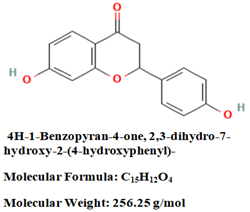Abstract
Background: Diabetes, as it is known globally, is a chronic and severe metabolic disorder that directly affects the metabolism of carbohydrates, fats, and proteins. This clinical condition is also known as diabetes mellitus. Practically significant rates of morbidity and mortality are associated with it. High blood sugar, in addition to biochemical changes in glucose and fat metabolism, are among the distinct chemical characteristics of this condition. The development of oxidative stress, systemic inflammation, beta-cell destruction, insulin resistance, and type 2 diabetes are associated with both hyperglycemia and hyperlipidemia, respectively. We must also mention that these factors play a decisive role in the development of these conditions. One of the most important therapeutic agents that can actually be used in managing this disease is using natural medical herbal treatments.
Objective: Parts isolated from Trigonella foenum-graecum extract are studied in vitro for their bioactive components and possible anti-inflammatory, antioxidant, and antidiabetic properties.
Methods: The antioxidant activity was determined by conducting an experiment that utilized both peroxynitrite free radical scavenging and hydrogen peroxide scavenging. Also, Trigonella foenum-graecum was tested for its inhibitory effects on α-glucosidase and α-amylase using a substrate-based enzyme inhibition methodology. Researchers found that SGOT, SGPT, and ALP activities in rat serum had changed. A p-value of less than 0.05 was deemed to be statistically significant.
Results: In this study, the IC50 value of the antioxidant activity (scavenging hydrogen peroxide) of the crude plant extract used in this study and its molecules was recorded from 65.23 ± 2.71 μg/ml to 29.11 ± 1.31 μg/ml. Likewise, the IC50 value for α-amylase inhibition ranged from 119.14 ± 0.38 μg/mL to 43.05 ± 0.09 μg/mL. Similarly, the IC50 value of crude methanol extract of Trigonella foenum-graecum against α-glucosidase was 65.55 ± 0.14μg/mL. On the other anti-inflammatory side, a significant decrease (P < 0.01) was recorded in the elevated SGPT and ALP activities in the serum of mice treated with Trigonella foenum-graecum extract (0.5 ml/kg).
Conclusion: Enzymes like α-glucosidase and α-amylase can be inhibited by the powerful antioxidant Trigonella foenum-graecum. More research is required to determine which compounds block, though.
Full text article
References
Mohamed,Z., Biochemical study of the antidiabetic action of the Egyptian plants Fenugreek and Balanites, Molecular and cellular biochemistry, 2006,281(1),173-183.
Palaniswamy, M., Invitroantiplasmodic activity of Trigonella foenum-graecum, Oxford journal, 2008,7, 441-445.
Kim suji et al., Hypoglycemic and Antihyperlipidemic Effect of Four Korean Medicinal Plants in Alloxan Induced Diabetic Rats, American journal of biochemistry and biotechnology, 2006,2(4),154-160.
Thomas, J.E.,Basu, S.K. and Acharya, S.N., Identification of Trigonella accessions which lack antimicrobial activity and are suitable for forage development, Can journal plant science, 2006,86, 727-732.
Lee KG, Mitchell AE, Shibamoto T. Determination of antioxidant properties of aroma extract from various beans. J Agri Food Chem 2000;48:4817- 4820.
Thomson MJ. The role of free radicals and antioxidants: How do we know that they are working? Criti Rev Food Sci Nutri 1995;35:21-29.
Kris-Etherton PM, Hecker KD, Bonanome A, Coval SM, Binkoski AE, Hilpert KF, Griel AE, Etherton TD. Bioactive compounds in foods: their role in the prevention of cardiovascular disease and cancer. Am J Med 2002;113:71s-88s.
Behara BC, Verma N, Sonone A, Makhija U. Determination of antioxidant potential of lichnen Usnea ghattensis in vitro. LWT Food Sci Tech 2006;39(1):80-85.
Khanra Ritu, Chatterjee Atanu, Singh Bhupender Pal, Goel Ashutosh, Sen Kalyan, Antimicrobial activity of ethanolic extract of Trigonella foenum graecum, International Research Journal of Pharmacy 2010: 181-183.
Syeda Birjees Bukhari, Muhammad Iqbal Bhanger and Shahabuddin Memon, Antioxidative Activity of Extracts from Fenugreek Seeds Trigonella foenum- graecum, Pak. J. Anal. Environ. Chem. 2008; 9 (2):78-83.
Fedelic Ashish Toppo, Aachna Akhand, dr. A.K. Pathak, pharmacological actions and potential uses of Trigonella foenum-graecum: a review, Asian Journal of Pharmaceutical and Clinical Research 2009; 2 (4):29-38.
S. Kaviarasan, G.H. Naik, R. Gangabhagirathi, C.V. Anuradha, K.I. Priyadarsini, In vitro studies on antiradical and antioxidant activities of fenugreek (Trigonella foenum graecum) seeds, Food Chemistry2007; 103: 31–37.
R. Bundy, A. F. Walker, R. W. Middleton, and J. Booth, “Turmeric extract may improve irritable bowel syndrome symptomology in otherwise healthy adults: a pilot study,” The Journal of Alternative and Complementary Medicine. 2004; 10(6): 1015–1018.
D. Shoskes, C. Lapierre, M. Cruz-Corerra et al., “Beneficial effects of the bioflavonoids curcumin and quercetin on early function in cadaveric renal transplantation: a randomized placebo controlled trial,” Transplantation. 2005; 80(11): 1556–1559.
P. R. Holt, S. Katz, and R. Kirshoff, “Curcumin therapy in inflammatory bowel disease: a pilot study,” Digestive Diseases and Sciences. 2005; 50(11): 2191–2193.
H. Hanai, T. Iida, K. Takeuchi et al., “Curcumin maintenance therapy for ulcerative colitis: randomized, multicenter, doubleblind, placebo-controlled trial,” Clinical Gastroenterology and Hepatology. 2006; 4(12):1502–1506.
S. Montserrat-de la Paz, M. D. Garc´ıa-Gimenez, M. ´ Angel- ´ Mart´ın, M. C. Perez-Camino, and A. Fern ´ andez Arche, “Long- ´ chain fatty alcohols from evening primrose oil inhibit the inflammatory response in murine peritoneal macrophages,” Journal of Ethnopharmacology. 2014; 151(1): 131–136.
V. N. Drozdov, V. A. Kim, E. V. Tkachenko, and G. G. Varvanina, “Influence of a specific ginger combination on gastropathy conditions in patients with osteoarthritis of the knee or hip,” The Journal of Alternative and Complementary Medicine. 2012; 18(6):583–588.
A. Khalvat, “Comparing the effects of ginger (Zingiber officinale) extract and ibuprofen on patients with osteoarthritis,” Archives of Iranian Medicine. 2005; 8(4): 267–271.
Authors
Copyright (c) 2024 https://creativecommons.org/licenses/by/4.0/

This work is licensed under a Creative Commons Attribution 4.0 International License.
